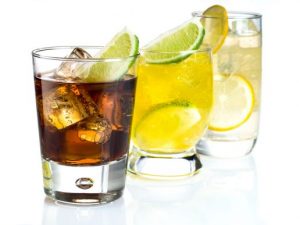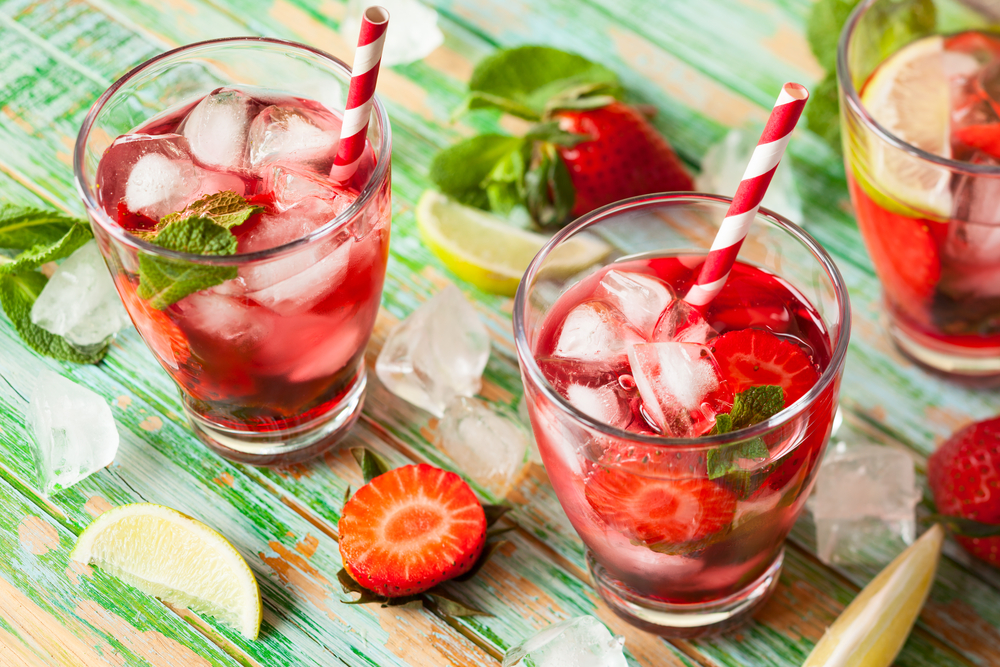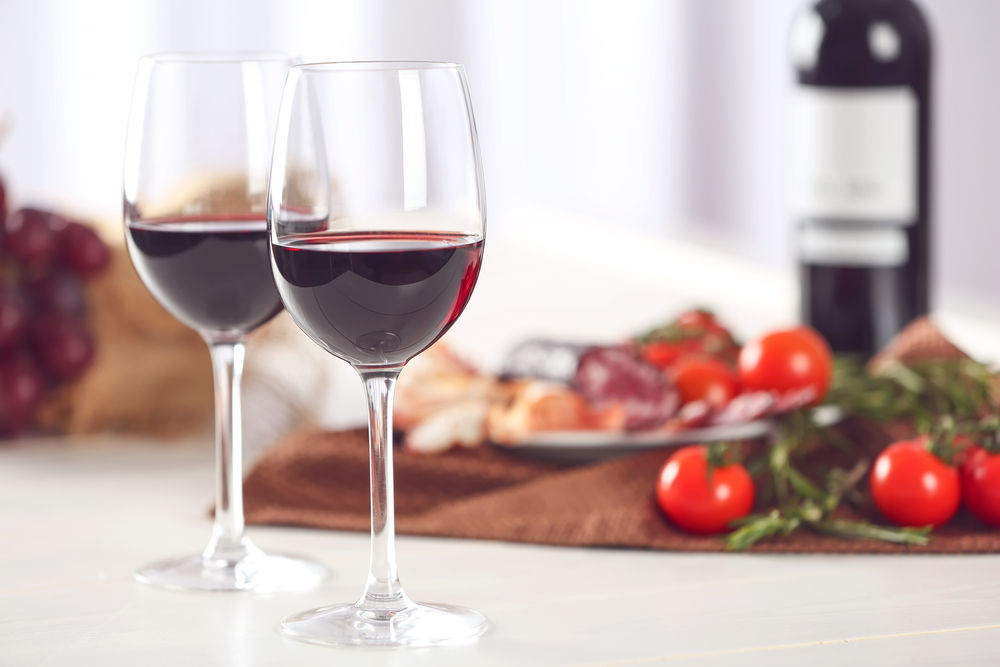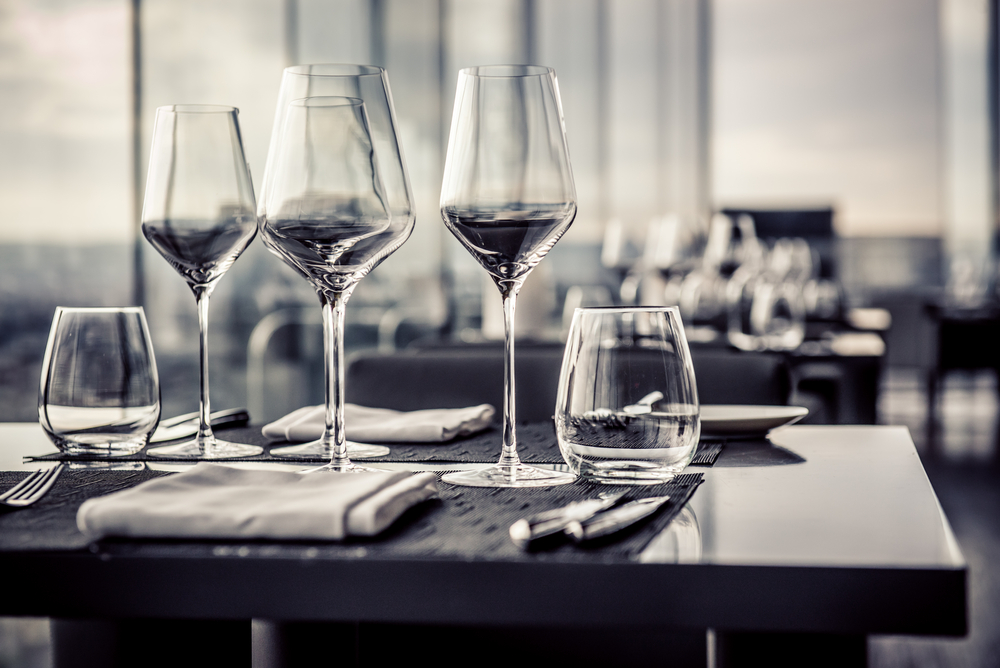Choose the Right Glass According to the Drink

Experts say that that drinking wine from a wine glass is different from drinking it from a normal cup. Could this be psychological? Choose the right glass according to the type of drink.
Hotel specialists are clear that, when serving a drink, it’s important to use an appropriate container for the type of drink. Is it possible that it tastes different in different glasses? Yes!
We recommend that you have a good range of glassware at home so that you’re prepared to serve any type of drink. From fancy dinners to brunch to snacks, it’s necessary to think about what you are serving drinks in.
The right glass for each drink

Why does it feel strange to drink certain types of beverages from the wrong glasses? Often, it’s due to the way we hold the glass, the carbonation, or the way we breathe in the smell.
Although this concept may seem abstract, it’s important to consider the type of glass when serving drinks and to choose the right glass. However, it’s easy to get confused.
Aesthetically, a drink served in the wrong glass means that it won’t taste the same and you’ll feel a certain distaste for the drink from the beginning.
Paying attention to the aesthetic of the drinks you serve demonstrates formality.
Types of glasses according to the type of drink

Next, we’ll give you a sample of the types of glasses that best suit each drink. Some may work well for various different drinks, but as a general rule, each drink has its specific glass. Let’s see which are the most suitable for each beverage:
- Wine: a wide cup with a mouth narrower than the body, also called a chalice. This is the best way to preserve wine. You can smell it easily and check the “tears” that fall back into the glass. There is also a stem at the base of the glass so the surface the glass is placed on doesn’t change the temperature of the liquid.
- Beer: ceramic or glass jug with a handle for holding. It’s a mistake to drink from the bottle since beer needs to “breathe” and expel CO2. Regarding the handle, this is to prevent your hand from heating the liquid up as you grab the glass.
- Soft drinks: preferably in wide glasses so you can add plenty of ice and the liquid can breathe and expel CO2.
- Champagne: the glass should be similar to a wine glass, but very narrow. This, more than anything else, is to offer less liquid since you typically drink less champagne. It also has a stem and base.
- Alcoholic beverages: whiskey, a martini, and most liquors can be served in a small, wide glass with a couple of ice cubes. The idea is that the glass is small since usually, these drinks are smaller.
It’s easy to tell at an important meal or dinner when drinks are served in the wrong glasses. If this happens in a bar or restaurant, it’s an indication sometimes of the quality.
Protocol of glasses during a meal

Normally, there are formal codes for placing things on the table. In other words, a protocol. The glasses, plates, and silverware should follow the protocol.
- A water glass: as a general rule, at most meals, people drink water. For that reason, it’s essential to have an exclusive glass for it.
- Wine glasses, one for red and one for white: at an important meal, it is possible to have two types of wine for tasting. Therefore, you’ll need both these glasses.
- Glasses for champagne: at the end of some meals, there will be a toast. Consequently, it’s important to have a champagne glass. However, it doesn’t always have to be on the table at the start of the meal. You can bring these out at the end.
- Shot glass: This is a specialty glass that shouldn’t be out at the beginning. However, it can be offered at the end and those who want one will take it.
This protocol is important to remember for a fancy dinner. Make sure you have the right glass for each drink. You’ll show your guests that you pay attention to detail and you keep formality in mind.
Experts say that that drinking wine from a wine glass is different from drinking it from a normal cup. Could this be psychological? Choose the right glass according to the type of drink.
Hotel specialists are clear that, when serving a drink, it’s important to use an appropriate container for the type of drink. Is it possible that it tastes different in different glasses? Yes!
We recommend that you have a good range of glassware at home so that you’re prepared to serve any type of drink. From fancy dinners to brunch to snacks, it’s necessary to think about what you are serving drinks in.
The right glass for each drink

Why does it feel strange to drink certain types of beverages from the wrong glasses? Often, it’s due to the way we hold the glass, the carbonation, or the way we breathe in the smell.
Although this concept may seem abstract, it’s important to consider the type of glass when serving drinks and to choose the right glass. However, it’s easy to get confused.
Aesthetically, a drink served in the wrong glass means that it won’t taste the same and you’ll feel a certain distaste for the drink from the beginning.
Paying attention to the aesthetic of the drinks you serve demonstrates formality.
Types of glasses according to the type of drink

Next, we’ll give you a sample of the types of glasses that best suit each drink. Some may work well for various different drinks, but as a general rule, each drink has its specific glass. Let’s see which are the most suitable for each beverage:
- Wine: a wide cup with a mouth narrower than the body, also called a chalice. This is the best way to preserve wine. You can smell it easily and check the “tears” that fall back into the glass. There is also a stem at the base of the glass so the surface the glass is placed on doesn’t change the temperature of the liquid.
- Beer: ceramic or glass jug with a handle for holding. It’s a mistake to drink from the bottle since beer needs to “breathe” and expel CO2. Regarding the handle, this is to prevent your hand from heating the liquid up as you grab the glass.
- Soft drinks: preferably in wide glasses so you can add plenty of ice and the liquid can breathe and expel CO2.
- Champagne: the glass should be similar to a wine glass, but very narrow. This, more than anything else, is to offer less liquid since you typically drink less champagne. It also has a stem and base.
- Alcoholic beverages: whiskey, a martini, and most liquors can be served in a small, wide glass with a couple of ice cubes. The idea is that the glass is small since usually, these drinks are smaller.
It’s easy to tell at an important meal or dinner when drinks are served in the wrong glasses. If this happens in a bar or restaurant, it’s an indication sometimes of the quality.
Protocol of glasses during a meal

Normally, there are formal codes for placing things on the table. In other words, a protocol. The glasses, plates, and silverware should follow the protocol.
- A water glass: as a general rule, at most meals, people drink water. For that reason, it’s essential to have an exclusive glass for it.
- Wine glasses, one for red and one for white: at an important meal, it is possible to have two types of wine for tasting. Therefore, you’ll need both these glasses.
- Glasses for champagne: at the end of some meals, there will be a toast. Consequently, it’s important to have a champagne glass. However, it doesn’t always have to be on the table at the start of the meal. You can bring these out at the end.
- Shot glass: This is a specialty glass that shouldn’t be out at the beginning. However, it can be offered at the end and those who want one will take it.
This protocol is important to remember for a fancy dinner. Make sure you have the right glass for each drink. You’ll show your guests that you pay attention to detail and you keep formality in mind.
All cited sources were thoroughly reviewed by our team to ensure their quality, reliability, currency, and validity. The bibliography of this article was considered reliable and of academic or scientific accuracy.
Barquero, J. Daniel; Fernández, Fernando: Los secretos del protocolo, las relaciones públicas y la publicidad, Lex Nova, 2007.







